Ah, wavy Grovers…aka “exploding wavy Grovers”. So what are they, why do we call them that, and when do we find them on Rickenbacker basses? Let’s jump right into it!
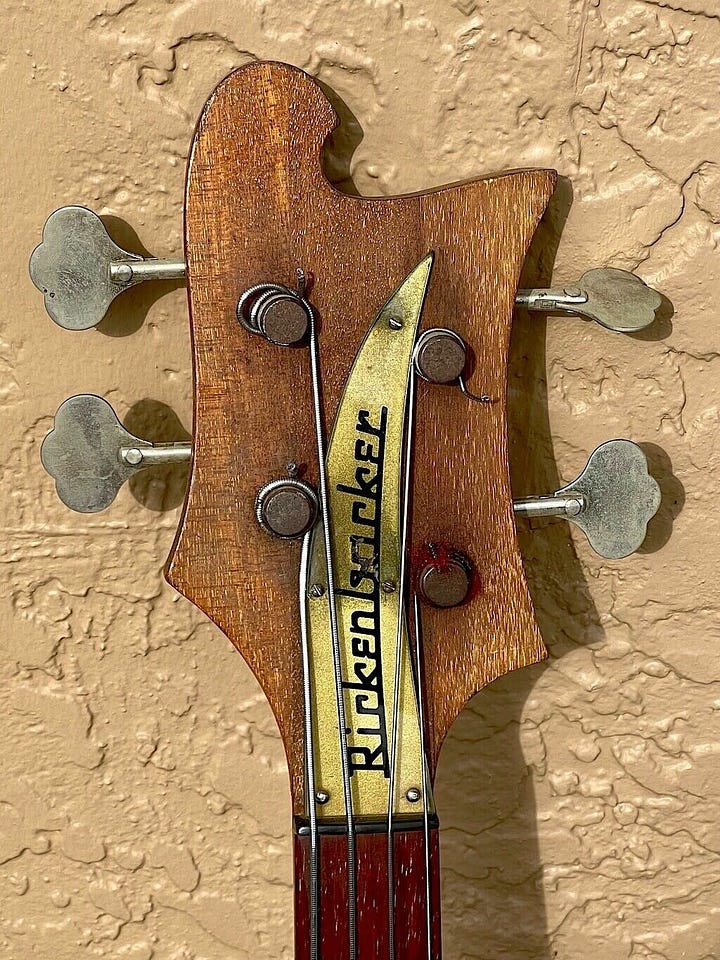
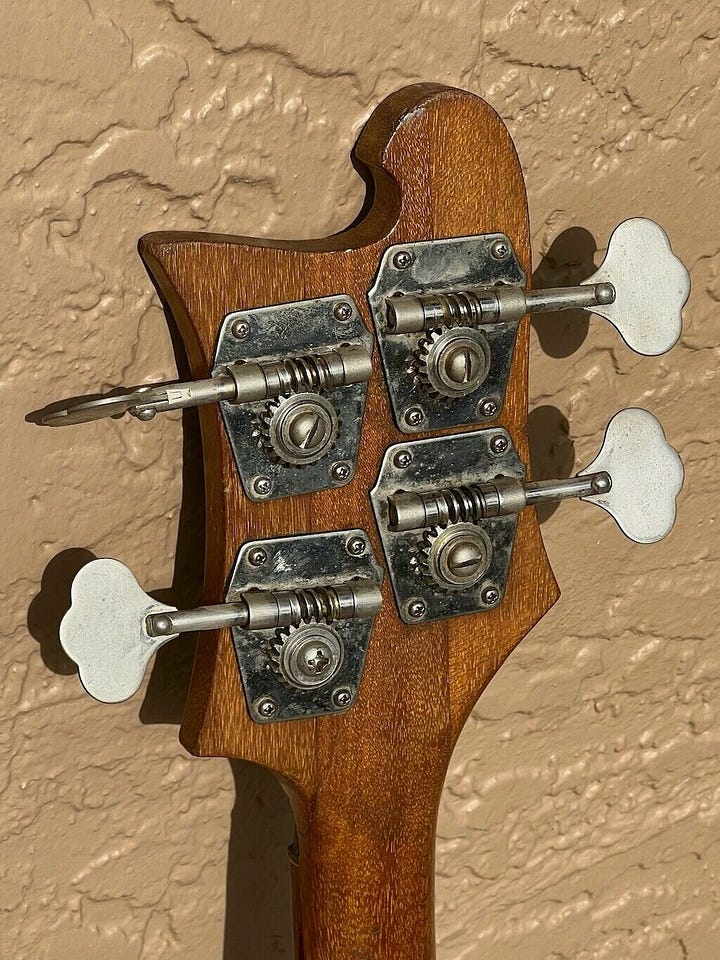
The first tuner used on the first Rickenbacker 4000 basses was the frankly massive reverse open backed Kluson model 546. Around 1963, after the 4001 joined the family, the tuners began transitioning to the smaller reverse open backed Kluson Model 538.
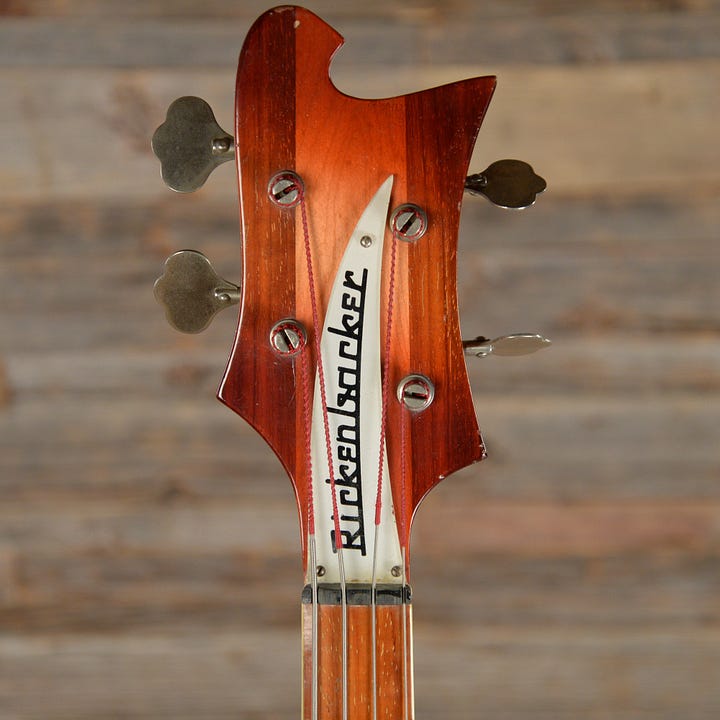
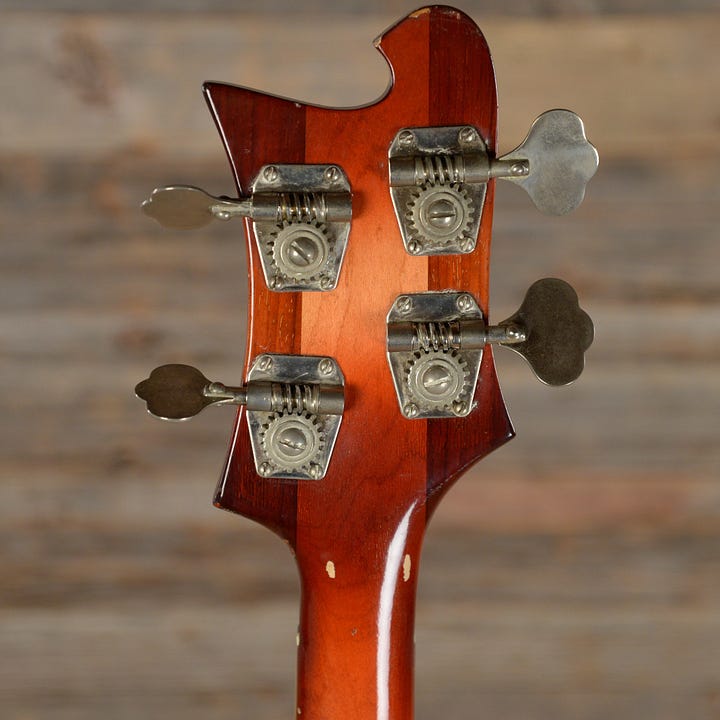
The Kluson 538–or Schaller or Gotoh copies thereof—has been the primary tuner used on the 4001/4003 basses ever since. Well, apart from a couple brief interludes. Which brings us back to wavy Grovers.
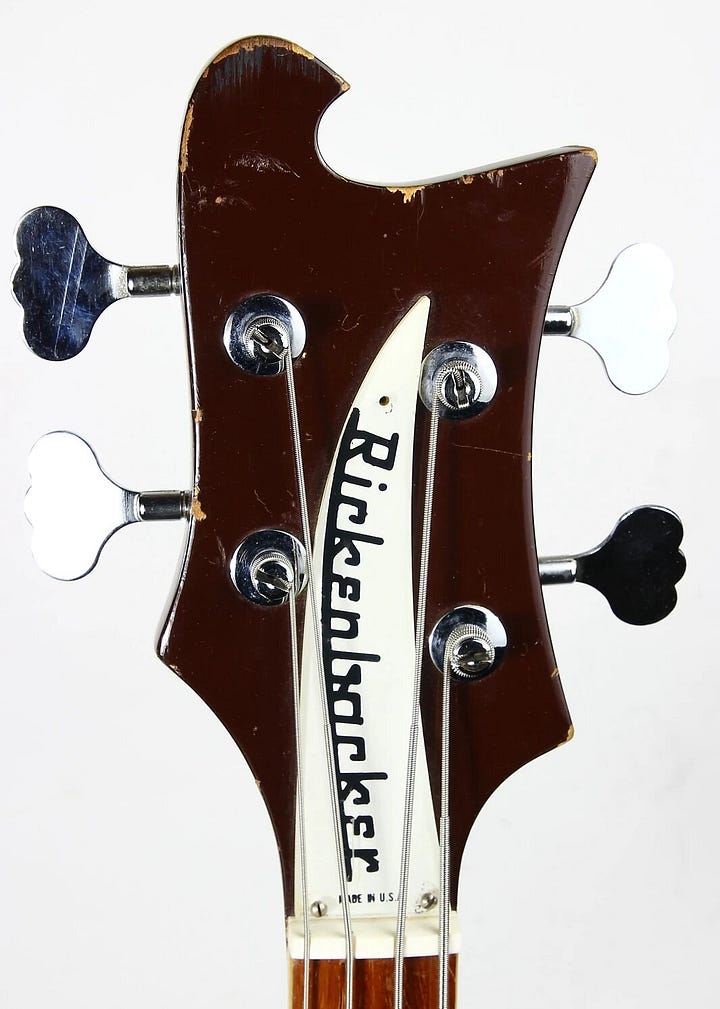
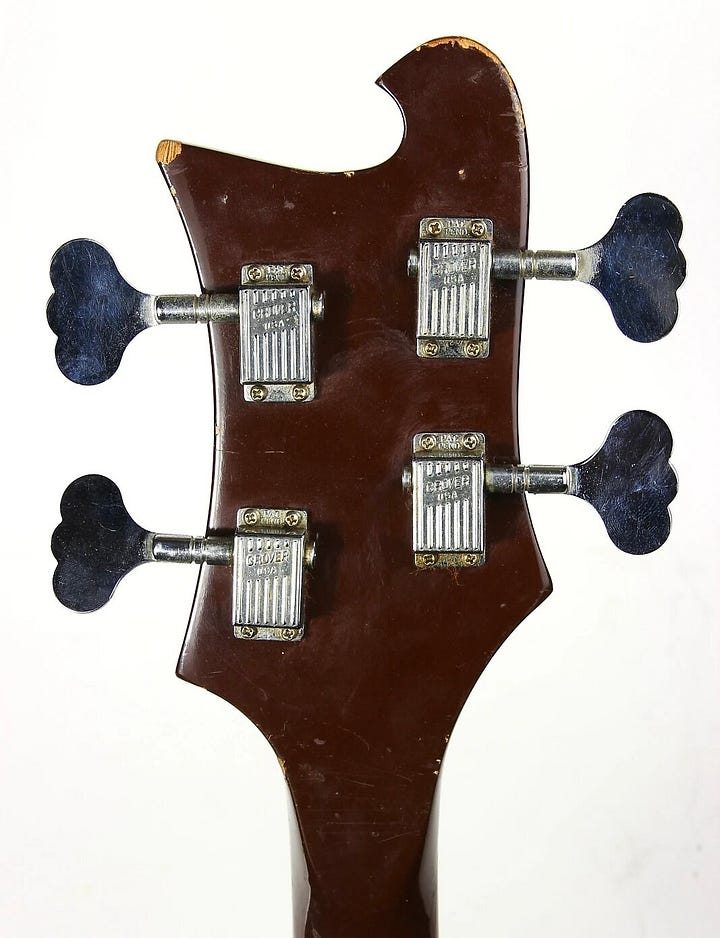
Or more properly, the Grover Slimline bass tuner. The Grover Slimline was a closed-back tuner with a much smaller footprint than the Kluson it replaced in mid 1969. Why the change? As far as I have been able to determine the reason has been lost to time, but the Grover would be the standard bass tuner until July 1974 when the Klusons would return.
So the keen eyed will have noticed that the tuners above are captioned as “flat Grovers.” I thought we were talking about wavy Grovers? Well, same tuner, different tuning keys. The keys above are, well, flat. But around June/July 1972 they got…wavy.
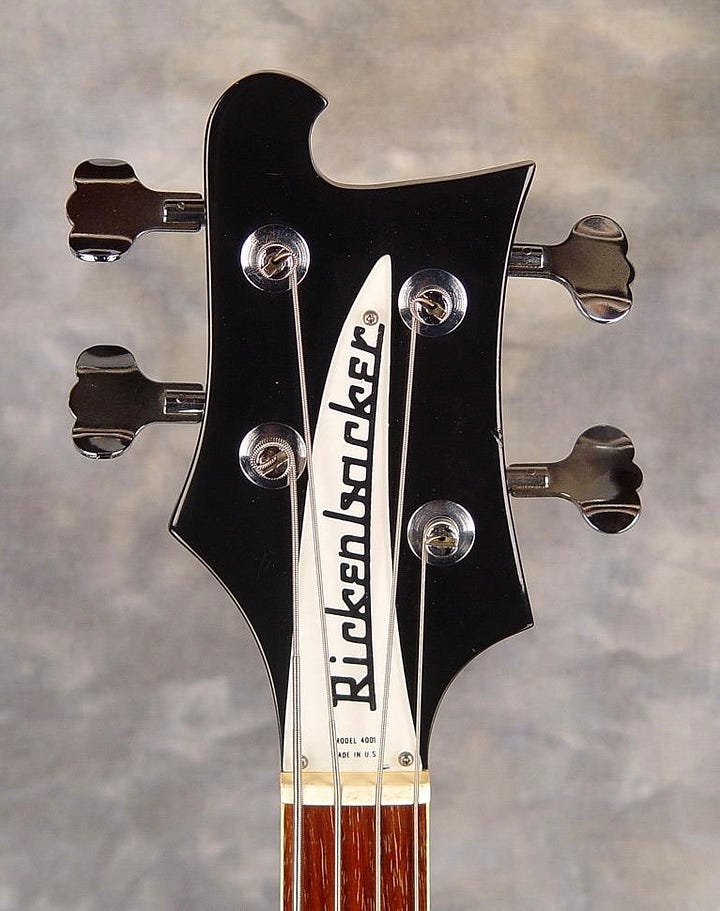

Put simply, the “ears” of the tuning keys got bent slightly in opposite directions, transforming the keys from flat stamped units to a “wavy” or “S” shape.
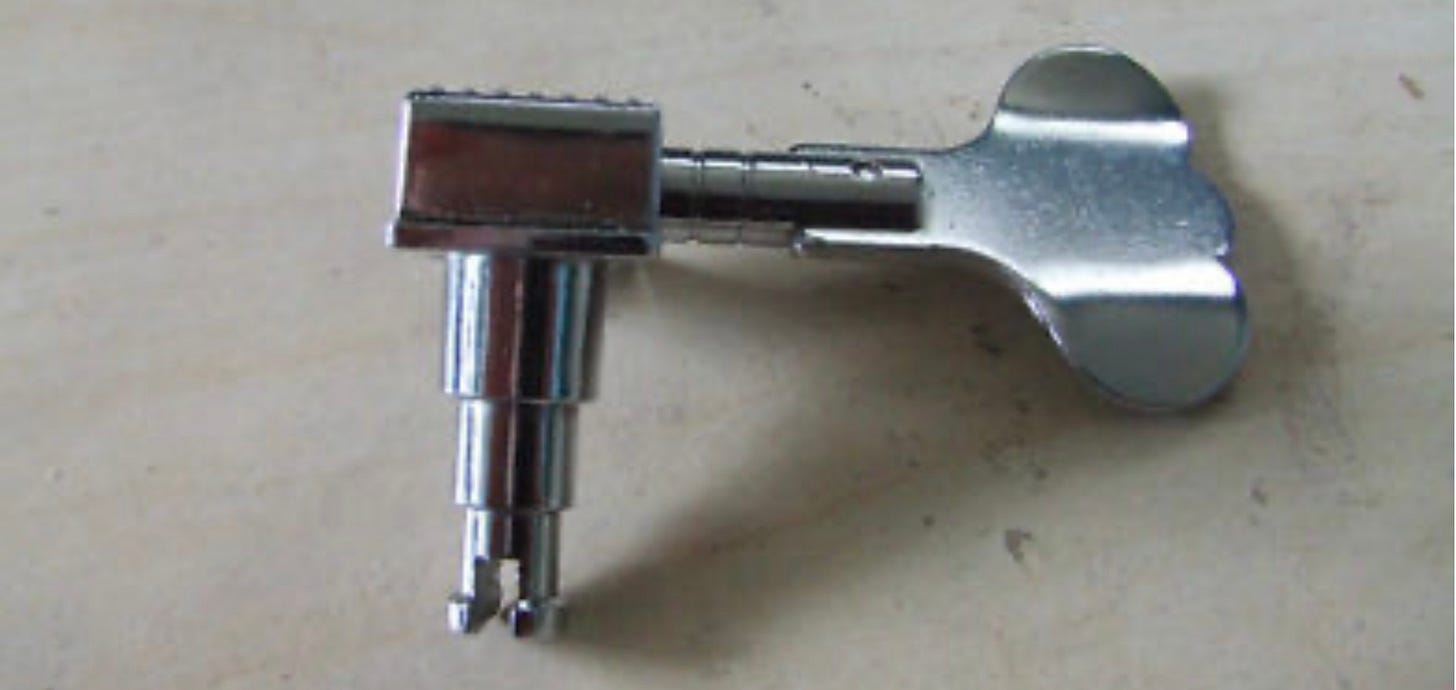
It’s a good tuner. Lighter than the Kluson even with a closed back, stable….just a pretty darn good tuner. Except….there was a small design flaw. And that’s where the “exploding” piece of “exploding wavy Grovers” comes to play.
You see, the caseback of the tuner was attached to the baseplate with press fit pins. In plain language, four pegs extend from the caseback and fit snugly into four corresponding holes in the baseplate. Those holes are just barely big enough, so a significant amount of pressure is required to seat the pins completely. Once all the way through the pins are pretty well “stuck” in place and, what’s more, the ends of the pins are compressed to flare them out a bit. All this does a pretty good job of holding the caseback in place.
That’s not in itself a bad design. But if the tuner receives a shock—like say banging a key into a doorway or a wall—and if the shock is strong enough (or occurs multiple times!) it can weaken or even shear the pins and the back will pop right off. And given that the back is the only thing holding all the “guts” of the tuner—the peg, shaft, and gear—in place, if you lose the back you lose the tuner. And it can’t be repaired. Thus “exploding” wavy Grovers.
And let’s be clear—the “flat” Grovers aren’t immune to this issue. It’s just that bass production was relatively low during the period they were used and extremely high during the “wavy” Grovers’ time, so the wavy ones get the bad rap based on the sheer number of incidences. But both are equally susceptible.
In June/July of 1974 Rickenbacker switched back to the Kluson 538s. Again, I can’t find a reason why, but it probably WASN’T because tuners were failing all over the place. Yes, it happens. But it usually takes time, and multiple “events” to precipitate. The vast majority of guitars from this era are still wearing their original tuners. That says something. Design flaw? Yes. Disastrous design flaw? Not really.
And that would be the end of the wavy Grovers story—until Kluson went out of business in early 1982! And what were the Klusons replaced with? Wavy Grover Slimlines, which began reappearing on Rickenbacker bass headstocks in July of 1982–including on the relatively new 4003.
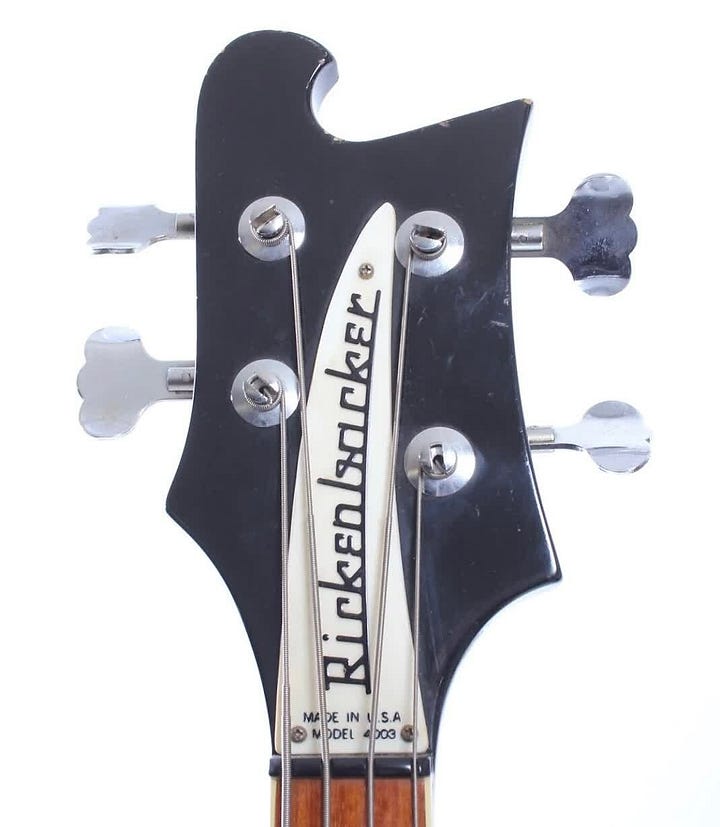
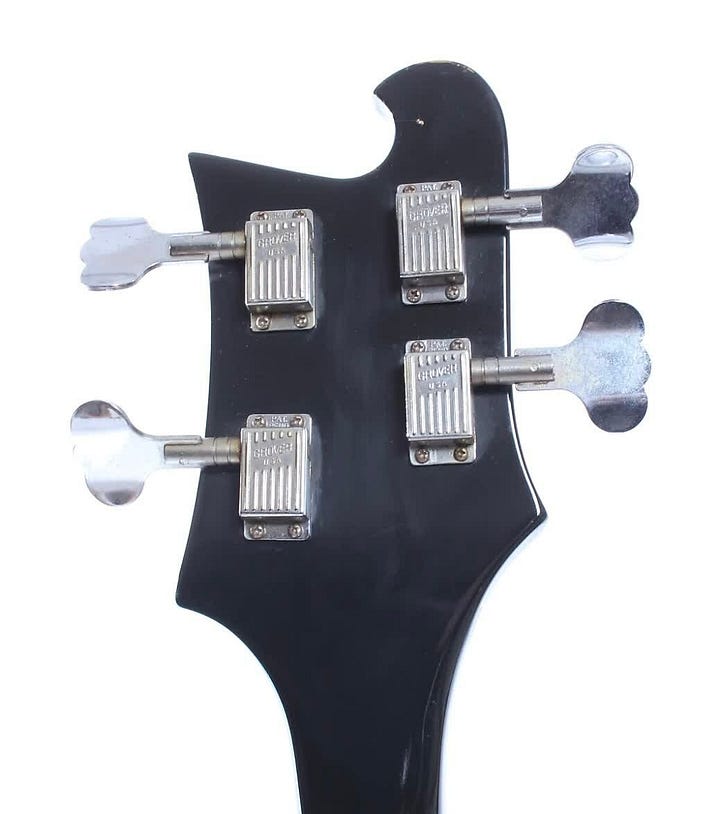
In mid 1985 Rickenbacker changed their supplier for all tuners to Schaller, and the wavy Grovers would be replaced—for good this time!—with Schaller produced and Rickenbacker branded Kluson 438 copies.
Now remember how I said that Grover Slimlines couldn’t be repaired once the back popped off? Well, that’s not completely true. But it takes a machine shop to do it. You can mill the back of the caseback flat—removing the pins—then tap holes where the pins had been to allow you to screw the base plate to the caseback. So doable, but not to the average joe.
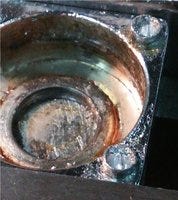
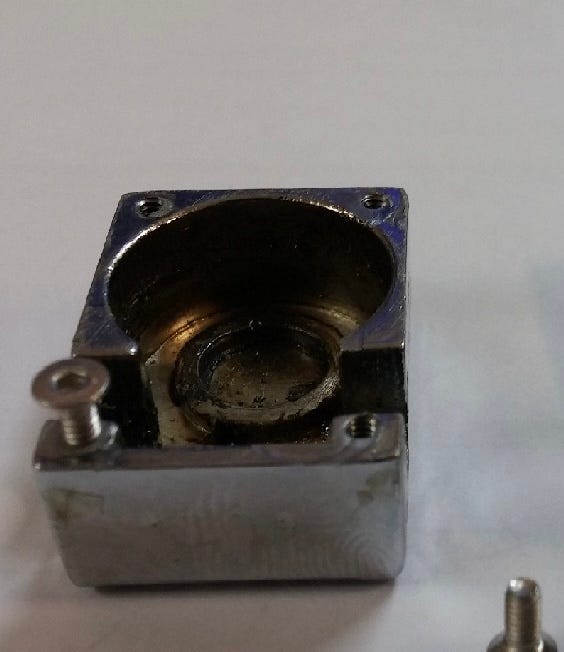
And that’s the deal with “wavy” Grovers. They really don’t totally deserve their “exploding” reputation, but that’s a part of their story!



